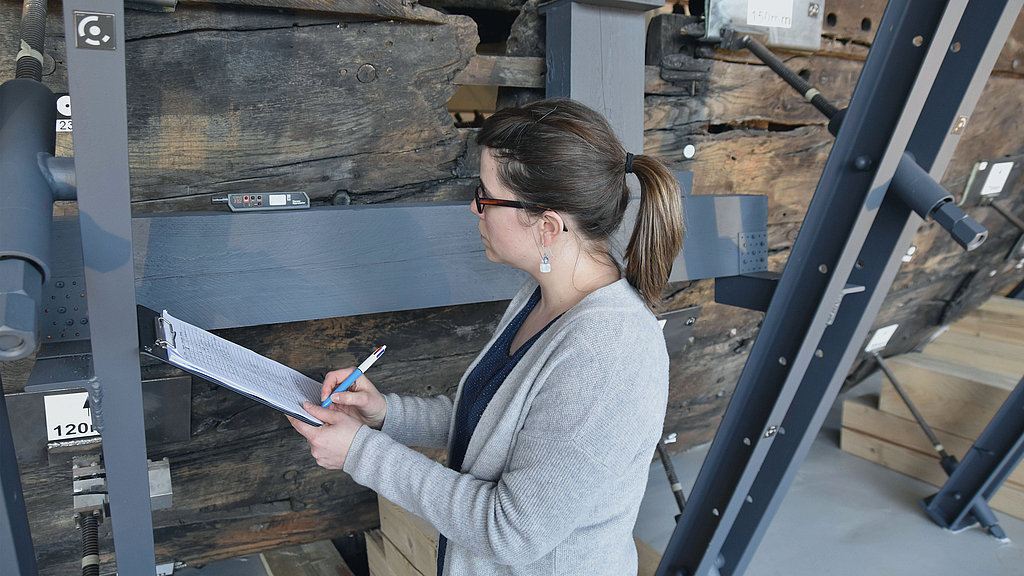Dissertation on the preservation of the cog published
Amandine Colson knows almost every inch of the cog - the main exhibit at the German Maritime Museum (DSM) / Leibniz Institute for Maritime History. Before devoting her doctorate to the procedures for preserving the wreck, the conservator was responsible for the DSM's archaeological collection for many years. She has now handed over her doctoral thesis to the DSM library.
Many visitors know the cog through the window-sized openings in the conservation trough in which it floated for around 20 years. Others saw her free-standing. Today, steel supports hold up the 14th century merchant ship. After the renovation of the cog hall in 2000, it was already clear that the more than 600-year-old frames would continue to “work” and even after the unprecedented conservation, the famous shipwreck would remain a special object of research with an eventful history - and future. “In 2001, the first deformations of up to 20 centimetres were observed,” says Dr. Amandine Colson.
When she started at the DSM in 2013, she was the conservator responsible for the archaeological collection and the cog. Through her participation in the European network initiative meeting on “Color and 3D in Cultural Heritage” (COSCH) in 2014, Colson came to her PhD topic (2016). The English-language doctoral thesis entitled “Spatial monitoring of the Bremen Cog: Long-term preservation of archaeological wooden ships in museums” has now been handed over to the DSM library by the researcher. It can be viewed and read there.
The publication is also available online as open access. The focus is on the measurement of the ship, the relevance of 3D monitoring for long-term preservation using various 3D methods and the photogrammetry method. “The monitoring system researched was completely new territory for the field of conservation and a reason for continued monitoring to ensure that the preserved shipwreck continues to be preserved for posterity,” says Colson about her dissertation, which was funded by the DSM and the publication of which was supported by the DSM Sponsors' Association with 600 euros. The work was supervised by Professor Mona Hess at the Otto Friedrich University in Bamberg and supported by Professor Thomas Luhmann from the Institute of Photogrammetry and Geoinformatics (IAPG) at Jade University Oldenburg.
With her work, Colson initiated a cooperation project with the Jade University of Applied Sciences. Surveyors come to the DSM every six months to check at measuring points whether the wreck is moving and use the latest technical methods to do so. The good news: the wreck currently has a solid h

Amandine Colson in front of the 14th century cog.

